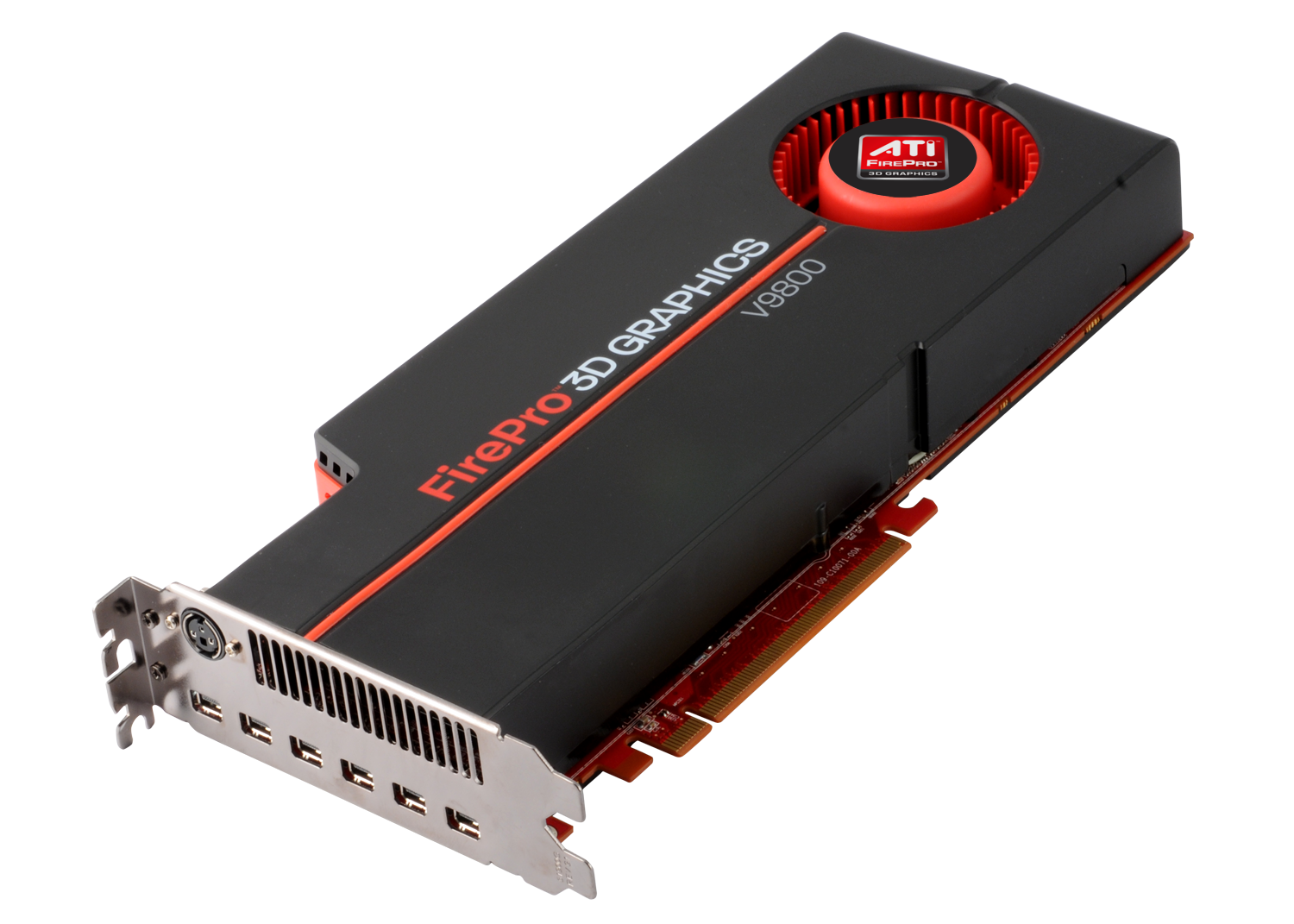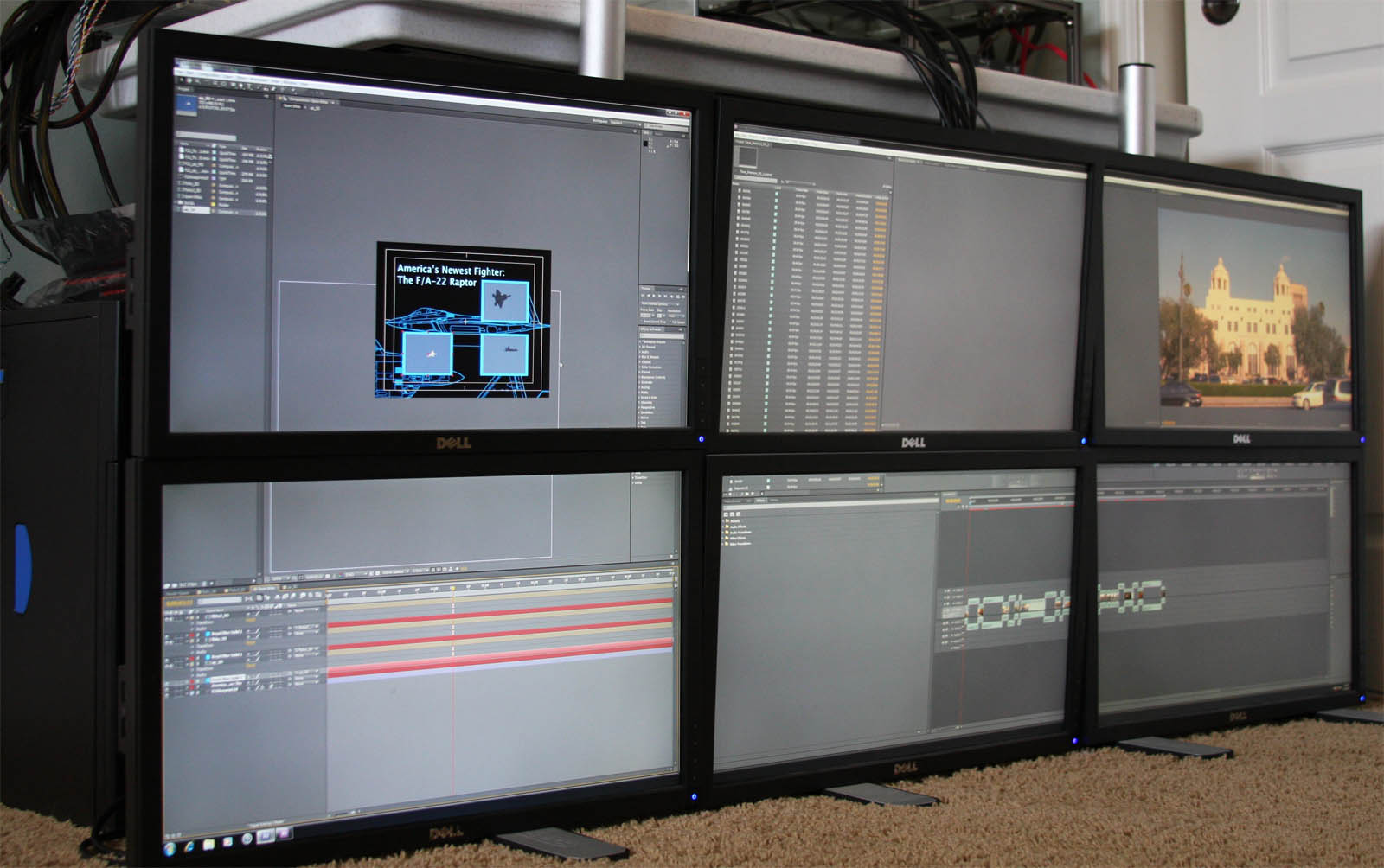AMD FirePro V9800 4 GB: Eyefinity Meets Professional Graphics
What's red, black, sports 4 GB of GDDR5, and has DisplayPort outputs all over? AMD's FirePro V9800, the company's ultra-high-end workstation card. We run it through a battery of SPECapc and real-world performance tests, then compare it to Quadro 5000.
Meet The FirePro V9800
We went into depth on the FirePro V8800 and Quadro 5000 back in September with Workstation Shootout: Nvidia Quadro 5000 Vs. ATI FirePro V8800.
For the most part, AMD’s FirePro V9800 is very similar to the V8800, with a handful of notable exceptions. Both cards employ AMD’s Cypress GPU with all 1600 stream processors enabled. The V8800’s core clock is set to 825 MHz, while the V9800 set to 850 MHz (that 25 MHz difference should be negligible in most benchmarks).
| AMD's "High-End" Lineup | FirePro V9800 | FirePro V8800 | FirePro V7800 |
|---|---|---|---|
| GPU | Cypress | Cypress | Cypress |
| Stream Processors | 1600 | 1600 | 1440 |
| Single-Precision TFLOPS | 2.72 | 2.64 | 2.02 |
| Memory | 4 GB GDDR5 | 2 GB GDDR5 | 2 GB GDDR5 |
| Memory Bandwidth | 147.2 GB/s | 147.2 GB/s | 128 GB/s |
| I/O | 6 x DisplayPort3-pin StereoFrame Lock/Genlock | 4 x DisplayPort3-pin StereoFrame Lock/Genlock | 1 x DL-DVI2 x DisplayPortFrame Lock/Genlock |
| Form Factor | Dual-Slot | Dual-Slot | Single-Slot |
| Power | 199 W | 208 W | 138 W |
| MSRP | $3499 | $1499 | $799 |
They also both sport GDDR5-based frame buffers running at the same 1150 MHz (yielding the same 147.2 GB/s of memory bandwidth on the same 256-bit bus). Granted, the V8800 includes 2 GB of memory, while the V9800 comes equipped with 4 GB. But don’t let twice the memory fool you—it’s actually pretty difficult to take advantage of that much RAM unless you’re working with scientific/oil/gas data sets or 4K frames in stereoscopic 3D.

The two cards occupy dual-slot form factors and support CrossFire. But while the FirePro V8800 only needs two six-pin power connectors, the V9800 requires one six-pin and one eight-pin connector. Moreover, the V8800 offers a quartet of full-sized DisplayPort outputs and a three-pin stereo connector. The V9800 fully utilizes Eyefinity through six mini-DisplayPort connectors (the same stereo plug is available, too).
Eyefinity
Because the FirePro V9800 uses DisplayPort exclusively, there are bound to be questions about hooking up to DVI-based monitors. The good news is that AMD includes five DisplayPort-to-single-link DVI adapters and one DisplayPort-to-dual-link DVI adapter with the card. The single-link dongles support resolutions of up to 1920x1200, while the dual-link dongle enables 2560x1600 on one display.

Of course, configuration is a lot simpler if you go with native DisplayPort monitors, like the Dell P2210Hs on my test bench. Connecting six of them is a simply matter of running mini-DisplayPort-to-DisplayPort cables between the components.
Get Tom's Hardware's best news and in-depth reviews, straight to your inbox.
Perhaps best of all (especially for professional users), most of the DisplayPort-oriented bugs we encountered back in March with AMD’s Radeon HD 5870 Eyefinity 6 Edition card have seemingly been worked out. No more monitors disappearing from our Display Group. No more corrupt cursors persisting on-screen. And no more driver-reported failures. The only issue we encountered was a tendency for our 30” Dell 3007WFP to not receive a signal during boot-up (attached to a dual-link active adapter), forcing a manual reboot (Update: We confirmed with AMD that this problem is isolated to the Dell 3007WFP in our lab. Newer models from Dell shouldn't have this issue).
Current page: Meet The FirePro V9800
Prev Page AMD's FirePro V9800 Goes Ultra-High-End Next Page Test Setup And Benchmarks-
Nvidia shines in the industrial/commercial/scientific market, with their driver team and CUDA/GPGPU tech. Too bad the V9800 fell short of expectations. Also, Nividia cards are obviously going to have better results in Adobe Mercury since both companies worked together on hardware optimization. AMD needs to be more aggressive in working together with software makers, (including games!) to have a stronger hold on both the CPU and GPU markets. Overall, a good read.Reply
-
reprotected It would actually make sense if they compared with the V8800 and the Quadro 6000. We also need a review of the Quadro 4000, 2000 and the 800, along with the lower Firepro 3D series.Reply -
reprotectedIt would actually make sense if they compared with the V8800 and the Quadro 6000. We also need a review of the Quadro 4000, 2000 and the 600, along with the lower Firepro 3D series.1. Definetly, a review of the "lower end" cards would be nice.Reply
2. Plus, it would be nice to see how well the SLi cards scale.
3. Also, with the updated (e)nVidia desktop cards (GF100 to GF110), will the Quadro ones see a revision too - if so, when? -
cangelini radiovan1. Definetly, a review of the "lower end" cards would be nice.2. Plus, it would be nice to see how well the SLi cards scale.3. Also, with the updated (e)nVidia desktop cards (GF100 to GF110), will the Quadro ones see a revision too - if so, when?Reply
Good question (3), I'll ask!
Cheers,
Chris -
Cwize1 This was a rather underwhelming test suit. I think the fundamental problem you have is that most of the tests you ran were CPU based.Reply
What most of these production apps use the GPU for is on the fly rendering. For example, sculpting in blender can tax the GPU quite nicely given enough vectors. Another good blender one would be playing back a super resolution baked fluid simulation in real time. For example, take the tom's hardware logo you had before, turn it into water and let the water fall onto a flat surface. Bake the simulation with a ridiculous resolution (as much as you can before blender crashes) and then play the simulation back in real time while watching 5 high definition videos at the same time. -
hell_storm2004 The FirePro has still the long way to go to catch up with the Quadro. I hope ATI makes good progress in the workstation models soon like they have come a long way in the desktop market.Reply -
eclecticfortune In this article's conclusion appeared this statement:Reply
"If you’re a creative professional working with Adobe’s CS5 suite, then the Quadro is hands-down a no-brainer."
Benchmarks indicate that the lower priced GTX 480 is a far better choice (cost effective)for those taking advantage of the Mercury Playback Engine running Premiere Pro CS5.
http://ppbm5.com/Benchmark5.html
At the top of this page, click on the "MPE Performance Chart" to get a comparison between the different Nvidia Cards with Premiere Pro CS5.
